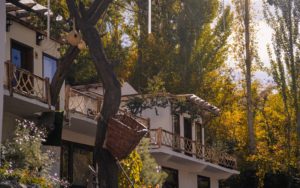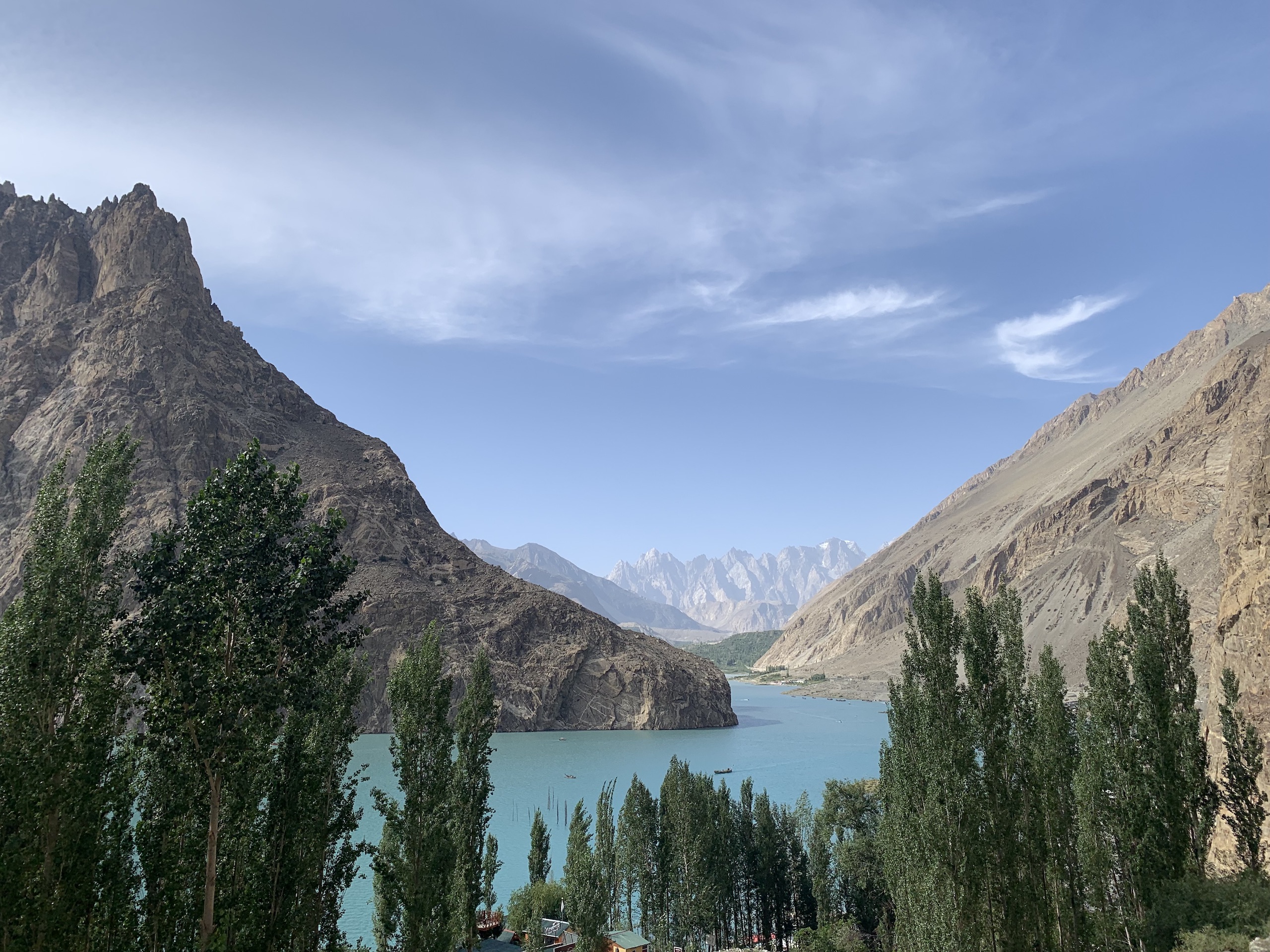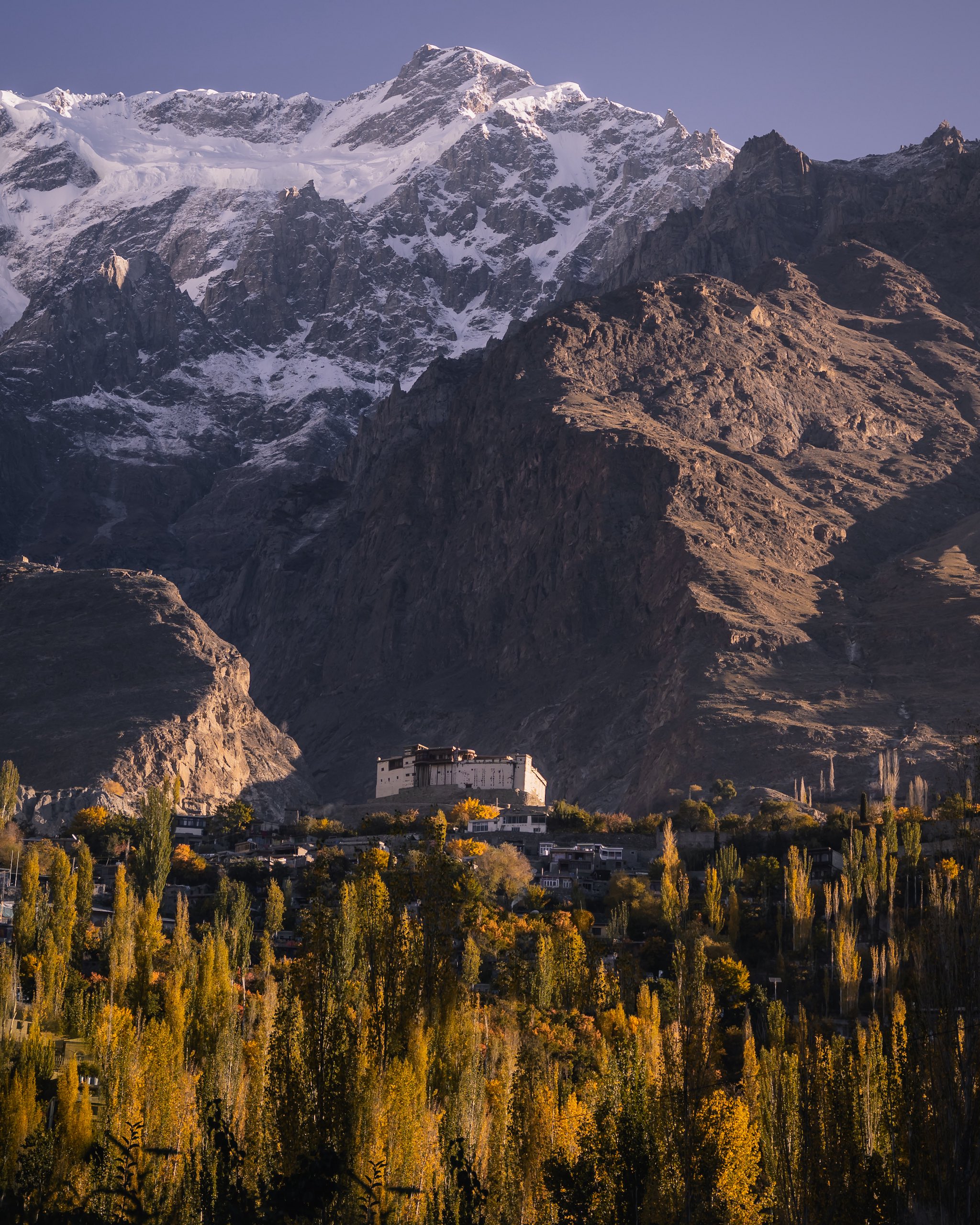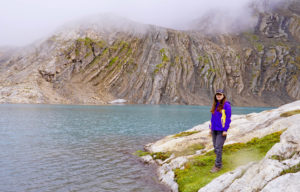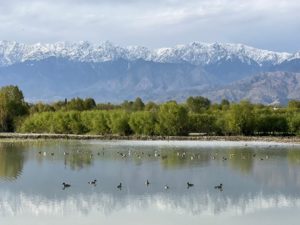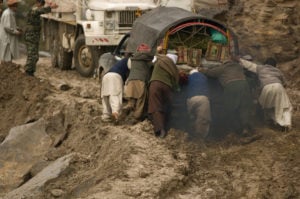The World Economic Forum estimates that more than 50% of the global economy is moderately or highly dependent on nature. In Pakistan’s delicate mountain ecosystems, this dependency is even greater. As such, rising temperatures and biodiversity loss pose a grave threat to the survival and wellbeing of Pakistan’s mountain communities, who depend on nature for their subsistence and livelihoods.
The Hindu Kush Himalaya (HKH) region stands at the forefront of the triple planetary crisis of biodiversity loss, climate change and pollution. Even if global warming is kept to within the global target of 1.5-2 degrees Celsius (which seems increasingly impossible to achieve), the region is predicted to lose up to half of its glaciers, leaving permanent scars on its riverine, agricultural and food systems and increasing risk from floods and other disasters.
The impacts of climate change are aggravated by unsustainable economic activities and the over-exploitation of natural resources. But use of natural resources does not have to be unsustainable, and as has been demonstrated in many places worldwide, responsible ecotourism can help both mountain ecosystems and communities to find a more balanced way of co-existing. In Pakistan’s mountains, ecotourism holds great potential to do just this.
Ecotourism is defined by the IUCN as “environmentally responsible travel and visitation to relatively undisturbed natural areas, in order to enjoy and appreciate nature (and any accompanying cultural features — both past and present) that promotes conservation, has low visitor impact, and provides for beneficially active socio-economic involvement of local populations.”
While this offers a useful description of ecotourism, there are no strict contextual indicators to determine what constitutes genuine ecotourism, and what does not.
Insensitive tourism in Pakistan’s mountains
Tourism is a key industry in both the HKH region, and Pakistan’s economy at large. In 2021, after the Covid-19 lockdown period, Pakistanis spent almost PKR 1,400 billion (USD 8.56 billion) on domestic tourism, and travel and tourism represented 3.7% of the national economy. The HKH region saw an influx of visitors, with around 700,000 local and international tourists visiting the mountainous Gilgit-Baltistan region in just three months.
The mountains of northern Pakistan offer tourists a diversity of adventurous, cultural, culinary, and aesthetic experiences, among a wide range of landscapes ranging from jagged snow-capped peaks to lush green meadows and picturesque lakes. Affordable options at most tourist and transportation facilities also make the region accessible for a major chunk of Pakistan’s population, where the average monthly household income is around USD 150. And as international travel becomes increasing unaffordable to many, demand for domestic tourism in Pakistan is rising, meaning the tourism industry looks like a solid investment opportunity.
But so far in Pakistan’s mountains, many of these investments have not been respectful of local culture, and have been inconsiderate of the environmental impacts of construction and operation of tourism facilities. This exacerbates the environmental challenges that the region and its people are already troubled with.
While there are many examples, perhaps most noteworthy is the base camp of K2 – the world’s second-tallest mountain. An increase in adventure tourism and mountaineering trips has seen the camp reduced to a dumping site, with expedition equipment, food waste and other paraphernalia left behind, and no checks or penalties to discourage this behaviour. As well as posing a health and safety hazard to future visitors, and degrading the aesthetic of the landscape, this behaviour is polluting a biodiverse landscape which is home to rare wildlife like the snow leopard, the Marco Polo sheep and the Himalayan brown bear.
Ecotourism – a golden opportunity for Pakistan’s mountains
The solution for this is rather simple – climate-resilient and ecologically-friendly tourism based on practices and policies which promote inclusion, innovation and accountability.
The tourism industry presents innumerable economic opportunities for local communities in the mountains of Pakistan, as well as potential for cultural exchange and education. So far, efforts from the federal and provincial governments have included development of eco-villages and camping sites in Chitral and Swat regions of Khyber Pakhtunkhwa, in collaboration with local NGOs and with support from the United Nations Development Programme (UNDP). These are maintained and operated by the provincial government and aim to provide local youth with employment and business opportunities. The government’s intent to promote ecotourism through such initiatives is reflected in its recent agreement to scale up the existing project in a second phase with the UNDP.
However, government efforts to generate demand for ecologically sensitive tourism among the masses in Pakistan have been largely futile. This is primarily because of a dearth of understanding among both consumers and the government of the severity of the environmental crises, and the low value for money that many ecotourism experiences currently offer the consumer – where they are often charged a high premium for a poorer quality service.
Positive models for ecotourism
What has so far been lacking in Pakistan is the creation of incentives for the private sector to invest in ecotourism. The country has not yet seen the kind of public-private partnerships which have been integral to the success of ecotourism models in Peru, Kenya, and India, which are designed as profit-making entities that also integrate ecological considerations.
In the mountains of Pakistan, there are currently only a handful of facilities run by the private sector which market themselves as ecotourism outfits, driven by values of sustainability and preservation of local cultural heritage.
One, the Offto Resort in Karimabad, Gilgit-Baltistan, is managed through a shared land-utilisation model under which the local community retains ownership of the resort land, and is an integral shareholder in the revenue generated. When I visited the resort earlier this summer and spoke with members of the local community, I found that they have also greatly benefitted from infrastructure developed around the resort site, such as roads and pony tracks linking it to the nearby town, and from livelihood opportunities such as provision of food to the resort.
As for its environmental credentials, the resort has worked to conserve fruit-bearing trees and those which have a strong ecological and cultural value. The resort management and local community have also planted more than a thousand fruit-bearing trees, to promote social agroforestry.
The construction design and materials used in the resort follow an indigenous methodology, endorsed by the Aga Khan Trust for Culture, which uses hay, soil, sand, and salvaged and green wood in place of emissions-intensive concrete. The resort also deploys the indigenous nature-based solution of a sand and gravel-based water filtration system, instead of chemical disinfectants which contribute to pollution.
A similar facility on western face of the HKH, the Villa Ayun in Chitral, is run by Chitral’s erstwhile royal family. On an exploratory trip to Villa Ayun, I learned that the facility follows several sustainable agriculture practices, including composting solid waste which is used as natural fertiliser on their farm, and is powered by community-managed micro-hydel and solar power. One of the village residents told me that this also ensures seamless power supply to the surrounding villages. While for now these are expensive options for an ecotourism venture, this has created an example of sustainable, responsible, and ecologically resilient tourism in Pakistan’s mountains.
What must be done?
With the impacts of the climate and nature crises growing in the HKH region, coupled with the economic dependence of the local communities on nature, it is imperative that all economic activities in Pakistan’s mountains are done sustainably and responsibly. As a green stimulus for Pakistan’s teetering economy, ecotourism can empower the country’s mountain communities while helping to address food insecurity, multidimensional poverty and access to electricity, internet and clean water – all of which remain limited in the HKH region.
The government must develop framework for ecotourism practitioners, to corroborate claims
It is the responsibility of Pakistan’s government to create an environment conducive to growth of the ecotourism industry. The government must also develop a monitoring and evaluation framework for ecotourism practitioners, to corroborate claims that initiatives are environmentally and socially responsible.
Meanwhile, investors and developers must convey the business case for ecotourism to all relevant stakeholders. An equal share of responsibility rests with the public as well, to create a demand for ecotourism in Pakistan, and respect the social and ecological sensitivities of the country’s mountain regions. Everyone involved must understand that the survival of Pakistan’s mountain communities depends on nature, and a sustainable way forward should be the only option.
